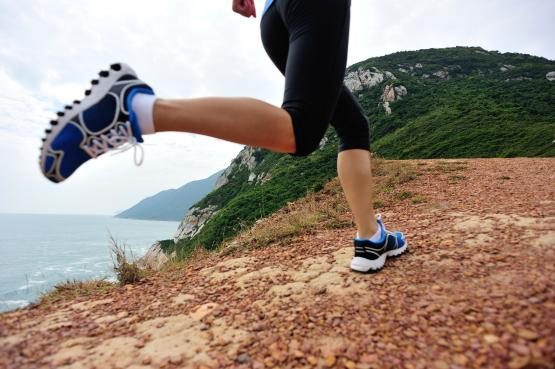
RUMOR: Overstriding leads to injuries
TRUTH: Excessive overstriding may lead to injury, but not always
If you’re putting your foot out in front of your body you are effectively stopping your forward momentum with each step. Overstriding is best described as a relationship between the foot and hip, whereby the foot strikes the ground in front of the hip. A large angle between the foot and hip means a large amount of overstriding, which has a high correlation to injury. However, small amounts of overstriding is natural. Typically, normal values fall between 5-7 degrees of overstriding. Runners between 7-15 degrees are considered excessive and over 15 degrees is considered extreme.
Yes, excessive overstriding can be dangerous but limited amounts are natural and safe. The dangers of overstriding are increased impact and strain through your ankles, knees, hips, and back. Additionally, research has shown that overstriding increases the rate of perceived exertion which can decrease running efficiency. Injury and long term health problems can develop, such as hamstring strain, stress fractures, bone contusions, and early arthritis. Leaning this will lead many runners to want to stop overstriding. But how do you know if you are overstriding and how can you change it?
You need to have evidence that you have excessive overstriding. This is important. Don’t change your form without knowing if your form is incorrect in the first place. To make the best decision, seek a custom video running analysis to understand your running gait pattern. If it has been determined that you are excessively overstriding, one of the most effective techniques to reduce overstriding is to have a trained professional provide verbal cues to improve your running gait pattern. Alternatively, increasing your cadence has also been found to be beneficial.
Hopefully you have learned a thing or two about overstriding and what you can do about it from this blog. Our goal is to provide runners with the education and tools they need to run better, faster, and safer.
Justin Jellin, DPT, ART
Doctor of Physical Therapy
Program Director RUNATOMY

References:
Lieberman et. al, Journal of Experimental Biology, 2015
Heiderscheit BC, et al. Proceedings of CSM 2010, San Diego, CA, USA, 2010
Taunton JE, et al. Br J Sports Med 36, 95-101, 2002



